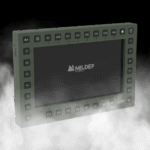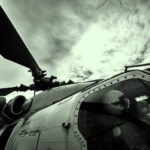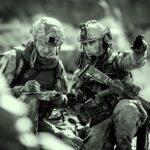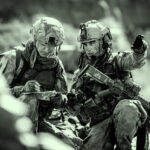Ashore and Afloat: In Step with US Marine Corps Commandant’s Planning Guidance
MilDef’s Rugged 19”/2 Suite of C4 Products Facilitate Distributed Operations
Today, there is increasing pressure on all branches of the US Military to be responsive and adaptable in the face of continued global and regional conflicts and evolving threat dynamics. As General David H. Berger, 38th Commandant of the United States Marines Corps, wrote in his Planning Guidance: “We cannot ignore strong signals of change nor be complacent when it comes to designing and preparing the force for the future.”
One tenet of General Berger’s Planning Guidance is a call for “a more integrated approach to operations in the maritime domain” to effectively combat the “rise of both land and sea-based threats to the global commons.” He mandates that the Marine Corps be able to “fight at sea, from the sea, and from the land to the sea; operate and persist within range of adversary long-range fires; maneuver across the seaward and landward portions of complex littorals; and sense, shoot, and sustain while combining the physical and information domains to achieve desired outcomes.”
In order for the Marine Corps to be relevant both ashore and afloat as General Berger outlines, they need to be supported by rugged and flexible command and control computing systems—ideally, solutions that can be utilized in more than one functional environment. However, many of the computing systems the US military currently has in use are not designed to handle both the harsh conditions of the battlefield and the complexities of modern distributed and dynamic combat missions.
Rugged 19”/2 suite of C4 products facilitate distributed operations

A single kit of modular electronics that can operate in a ground vehicle, in an amphibious vehicle, and shipboard would be a great benefit to the future of distributed operations that General Berger describes in his Planning Guidance. MilDef developed the 19”/2 suite of small form factor electronics to answer both the functional and environmental challenges of distributed military operations.
Limited space is something all military vehicles have in common. By occupying only one-half width of a standard 19” rack, 19”/2 products create up to 75% more space in racks, and enable greater mission flexibility within a common Operation Transit Case (OTC) stack. And, 19”/2 solutions are just as easily reconfigured to/from vehicle-mounted solutions into man-portable OTCs for Points of Presence (POPs) and Command Posts. The smaller footprint and modular components result in fewer racks and transit cases required to support a mission.
Flexible, mission-oriented design
Designed for interoperability and open architecture implementations, modular 19”/2 products easily integrate into existing system infrastructures and communicate seamlessly across existing transmission mediums. The comprehensive capability offerings within the 19”/2 family also allow for mission-tailored OTC designs based on a common core of products, a feature particularly advantageous to distributed operations. Multiple-mission configurations of the following 19”/2 products minimize logistics sparing for fielded system support:
- Computers and servers (Xeon, i7, Intel Core 2 Duo, Atom)
- Serial Switches, Layer 2 and 3 Ethernet Switches (8, 16, 18, 28 port Ethernet with 10GB fiber options)
- Routers (Cisco, UIDM, VoIP, Integrated Wave Relay, 4GLT)
- Power (AC/DC, UPS, Power Conditioning and Distribution)



One Common Logistics Tail
Multiple Distributed Operational Missions

Fully rugged computing systems for extreme environments
Electronics that can survive harsh conditions—both ashore and afloat—must be designed and tested to be rugged. General Berger calls for training “focused on winning in combat in the most challenging conditions and operating environments—from the thin air and high altitudes of the mountains, to the sweltering heat of triple canopy jungles, and including the sprawling self-organized chaos of dense urban terrain. Marines must be comfortable operating in all potential environments.” Likewise, the C4 kits the Marines implement to execute their missions must also perform in all potential environments.
Designed specifically for the battlefield, fully rugged MilDef solutions withstand the harshest environmental conditions. To ensure that new designs and customizations meet and exceed specific customer requirements, MilDef has invested in vibration, shock and drop testing capabilities, as well as state-of-the-art environmental test equipment such as EMC chambers and temperature cycling and IP test facilities.
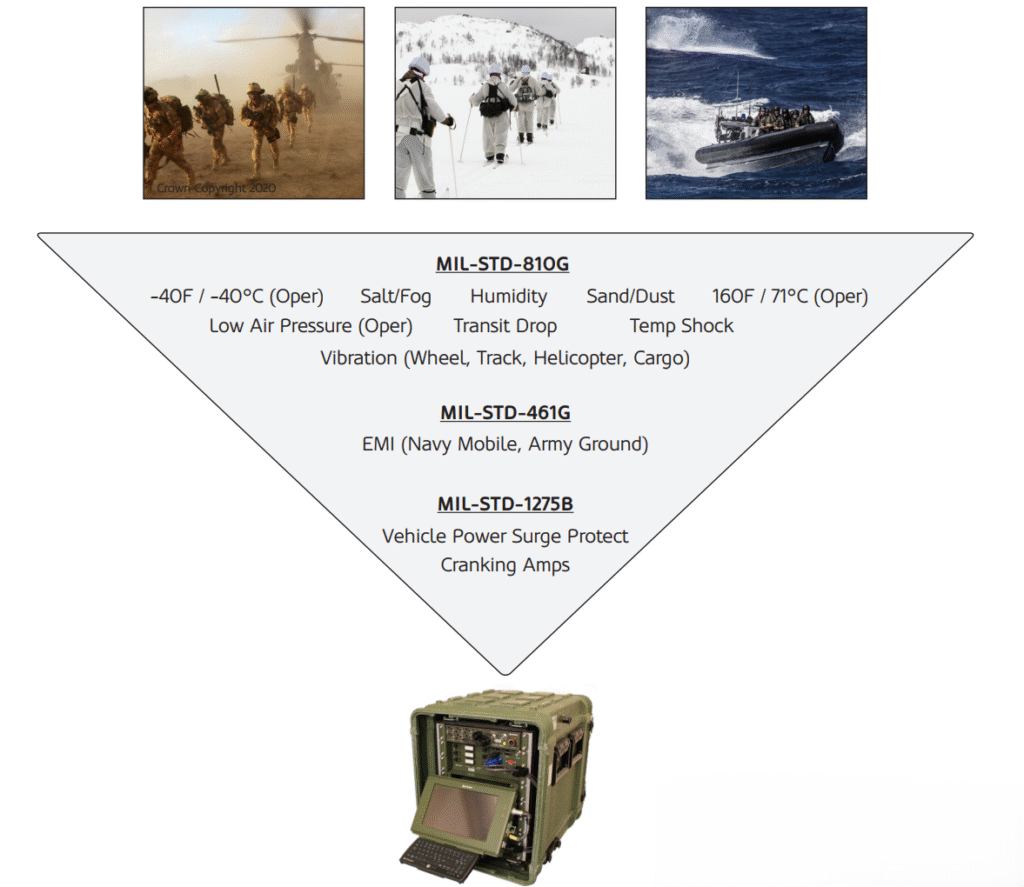
operation environment, backed up by comprehensive third-party test reports.
Improved mission readiness with expanded training opportunities
MilDef’s 19”/2 products support a “training forward” posture for distributed operations that supports General Berger’s directive for progressive, practical training: “We must make the most of every learning opportunity in garrison before units go to the field.”
The mobile, re-deployable design of 19”/2 kits provides an opportunity to train on the same systems that Marines take to the fight, from the schoolhouse to the garrison to afloat. In other words, being able to quickly set up, configure, and run mission scenarios in any environment means Marine operators have more training opportunities beyond formal schoolhouse and garrison training events. Additionally, the ability to train afloat while transiting to the area of operation ensures training is up to date with the most recent mission objectives.
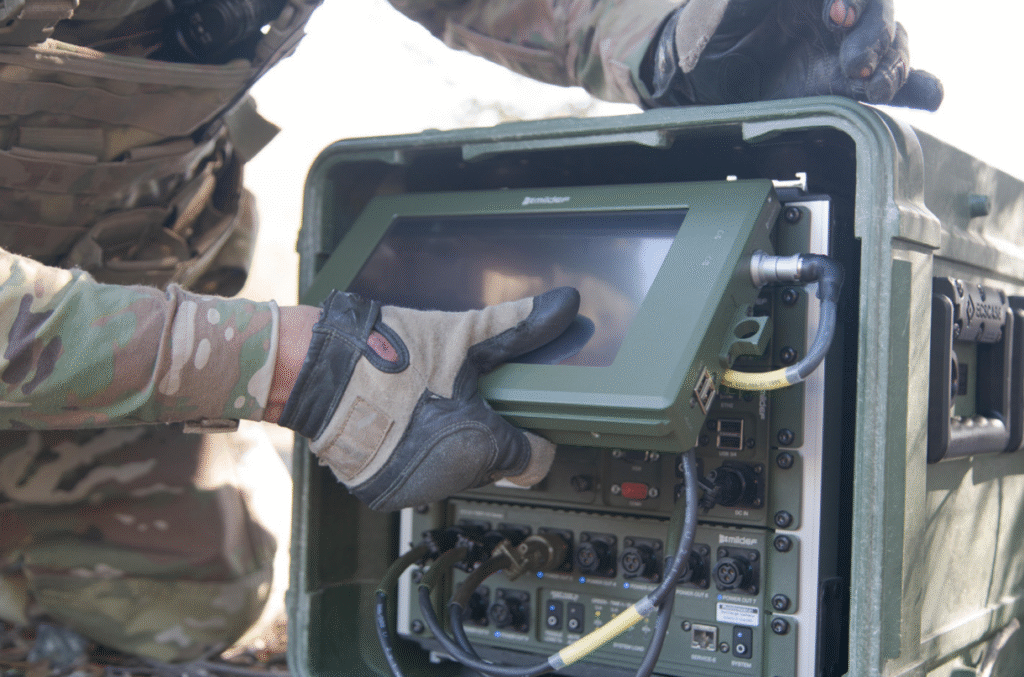
Smart sourcing: Future-proofed rugged computing systems
Rather than multiple forces designed for specific competencies, General Berger envisions a “single purpose-built future force [that] will be applied against other challenges across the globe.” The kind of force General Berger describes requires C4 hardware that can perform in varied operational and environmental conditions.
Modular, re-deployable computing systems align with Department of Defense (DoD) mandates like “Do More Without More” and “Better Buying Power” that guide procurement toward purchases that provide warfighters with affordable, value-added military capacity. With 19”/2 products, lifecycle cost and obsolescence are effectively managed by the modular approach to upgrades, maximizing re-use of existing vehicle Integration Kits, Operational Transit Cases, and cable plants.
MilDef focuses solely on the military, and thus understands the importance of being able to easily integrate into existing platforms and systems. MilDef offers customization of all products; for example, through specialized connectors and ports, essentially creating plug-and-play solutions from the beginning. Additionally, MilDef maintains parts and service for all products five years following end of life, making product acquisition a low-risk rugged investment.
Tactical electronics for technical dominance
As the military domain becomes more digital, the need for new technology and qualified suppliers of rugged tactical electronics infrastructure is clear. For more than 20 years, MilDef Inc. has developed, manufactured and sold rugged IT and special electronics to the defense sector. MilDef designs and manufactures technologies that help the US Military achieve and maintain technical dominance, especially in the field of tactical electronics.
